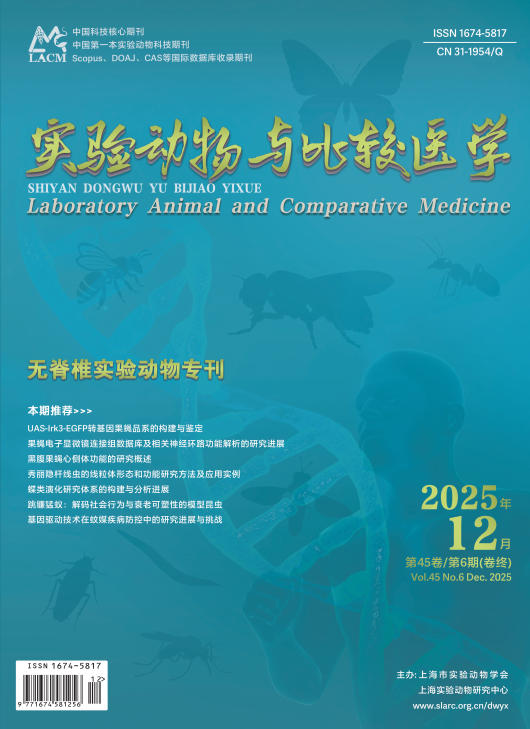-
Effects of Matrine on Th1/Th2 Balance and Related Pathways in Rats with Experimental Autoimmune Thyroiditis
- YAO Ting, GAO Yuan, ZENG Fangxin
-
2021, 41(3):
244-251.
DOI: 10.12300/j.issn.1674-5817.2020.086
-
 Asbtract
(
714 )
Asbtract
(
714 )
 HTML
(
22)
HTML
(
22)
 PDF (4304KB)
(
693
)
PDF (4304KB)
(
693
)
-
Figures and Tables |
References |
Related Articles |
Metrics
Objective To investigate the effects of matrine on inflammation, helper T lymphocytes (Th)1/Th2, and monocyte chemoattractant protein-1 (MCP-1)/cell surface chemokine receptor 2(CCR2) signaling in rats with experimental autoimmune thyroiditis (EAT). Methods Seventy-five Lewis rats were divided into control, model, and low-, medium-, and high-dose matrine groups using the random number table method (n = 15 each). The EAT rat model was induced by immunization with porcine thyroglobulin (pTG). The low-, medium-, and high-dose groups were intragastrically administered 0.2, 0.4, and 0.6 g/kg matrine, respectively, at a volume of 2 mL. Rats in the control and model groups were given 2 mL of normal saline, once every other day for 4 weeks. The histomorphological changes in the thyroid were observed by hematoxylin and eosin (HE) staining. Serum levels of thyroid stimulating hormone (TSH), anti-thyroglobulin antibody (TGAb), thyroid peroxidase antibody (TPOAb), cytokine interferon-γ (IFN-γ), and interleukin (IL)-12, IL-4, and IL-10 were detected by ELISA. Results Compared with the TSH, TGAb, TPOAb, IFN-γ, IL-12, IFN-γ/IL-4, IL-12/IL-10, nuclear factor-kappa B p65 (NF-κBp65), MCP-1, and CCR2 protein levels in the control group, those in the model group were significantly increased, and the levels of IL-4 and IL-10 were significantly decreased (P < 0.05). After matrine treatment, TSH, TGAb, TPOAb, IFN-γ, IL-12, IFN-γ/IL-4, IL-12/IL-10, NF-κBp65, MCP-1, and CCR2 protein levels were significantly decreased, and IL-4 and IL-10 levels were significantly increased (P < 0.05); the differences were statistically significant (P < 0.05). Conclusion Matrine can inhibit the production of thyroid antibodies, downregulate Th1 cytokines, and upregulate Th2 cytokines, thus reducing the Th1/Th2 ratio and inhibiting the MCP-1/CCR2 signaling axis, thus playing a protective role in EAT.
-

